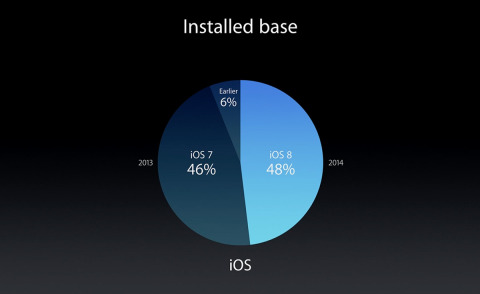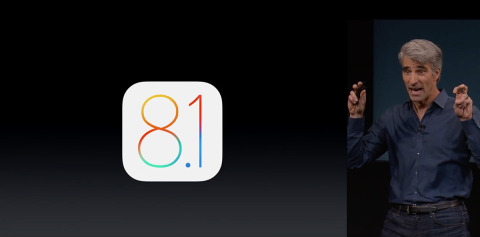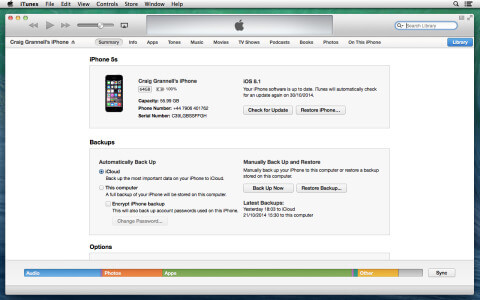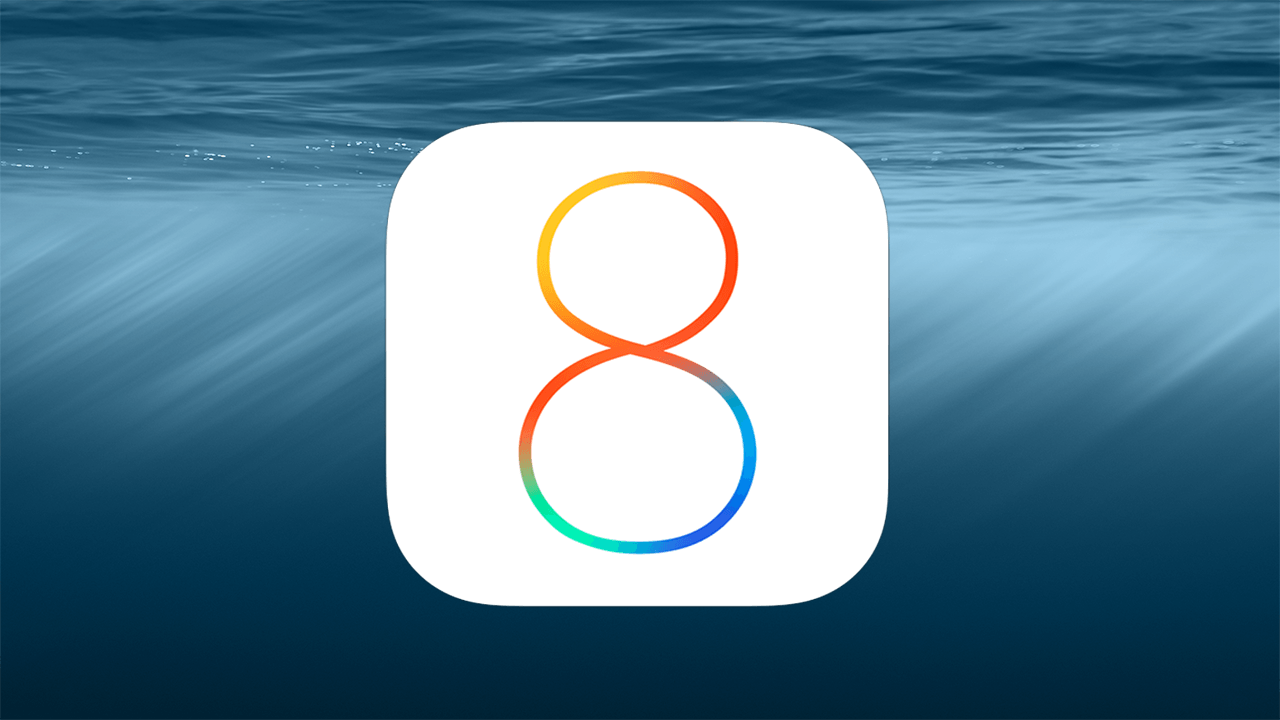Upgrades to Apple’s latest OS have stalled. We investigate the reasons why, and whether you should be concerned about them if you’re still running iOS 7
A curious thing happened at Apple’s recent October event. The company showed off its ‘installed base’ figures, as it usually does, to show how many people were using the latest version of iOS. Only this year, Apple ‘thought different’, and Software Engineering SVP Craig Federighi noted you could consider iOS 8 in combination with iOS 7, and thereby conclude 94 per cent of users were running an OS that shipped in “just over the last year”. Which is a curious turn of phrase.

Apple suspiciously now talking about the last two revisions of iOS.
Compared to Android, iOS fared well, as anyone who follows technology would expect; according to Apple’s figures, even Android’s 2013 KitKat release is still only on 25 per cent of Android devices. However, mashing the figures for two major iOS releases together was odd to see at an Apple event, and a quick look at 2013’s keynote might reveal why this was done: by the same point last year, 64 per cent (an extra 16 per cent) of iOS users were running the latest OS.
Read more: iOS 8 adoption currently far behind iOS 7 release
So why has iOS stalled when compared to its predecessors?
Bugs in the system
One of the more obvious reasons was addressed by Federighi himself. He said when Apple puts “a major new operating system into the hands of hundreds of millions of users, we do get a little bit of feedback,” using air quotes when saying ‘feedback’ and getting a knowing laugh from the audience. He added that this “takes us to improvements”, which is probably the closest we’ll ever get to an admission regarding a problematic software release from Apple.

Hair Force One becomes Hair Quote One.
Although the very common Home screen reboot problem from iOS 7 was mercifully largely absent this time round, iOS 8 came with a slew of issues. There were rotation bugs, with devices getting ‘stuck’ in landscape; Photos proved sluggish for many users, while Camera Roll was removed (though has since returned in iOS 8.1); HealthKit broke compatible apps, and was also later found to be incompatible with some non-US measurements used by diabetics; Safari uploads and selection problems abounded; status bars would overlay app information; and on and on.
Most damning, however, were two rather more serious issues: many users found that attempting to recover from iCloud led to no personal data returning to their devices, and iOS 8.0.1 wrecked cellular service and TouchID functionality on some iPhones.
A tight squeeze
But bugs haven’t been the only problem. Reports have scared some users into thinking iOS 8 performance is sluggish, whereas others have looked at iOS 8 and concluded it looks much the same as iOS 7 and therefore isn’t worth the hassle. Additionally, several major new features are all about integration with OS X Yosemite, which wasn’t available at the time of iOS 8’s release; upgrading to iCloud Drive would leave documents inaccessible on your Mac until such time as you could upgrade to the new version of OS X. Furthermore, many iPhone users won’t automatically be Mac owners and view many of the upgrades insignificant to them.
Perhaps the biggest problem, though, has been that iOS 8 demands a huge amount of free space — some 5 GB — to perform an over-the-air upgrade. Anyone with a fairly full device (especially likely for owners of 16 GB iPhones), faced with an error message and the dawning realisation they might have to delete a load of precious content, is far more likely to just stick with iOS 7, regardless of any benefits its successor might bring.
Should you upgrade?
If you’re still sitting on the fence about upgrading, there are some things to bear in mind. Apple is updating iOS 8 at some speed, and we’ve already seen iOS 8.1 fix the worst of the bugs. Some remain — iOS Share sheets don’t retain a custom sort order, for example — but the system now appears stable. In terms of performance, it might be worth avoiding if you have an iPhone 4s (or an iPad 2 or 3), but everyone else should be safe. More importantly, you’ll also have access to useful new functionality, such as being able to share content between apps more easily and use third-party filters in Photos.
Regarding integration, OS X Yosemite is now available as a free download, meaning that it’s now possible to use Continuity between iOS devices and Macs, for example picking up iPhone calls on a Mac and sending in-progress documents between devices.
As for free space, there is an alternative if you don’t have much left on your iPhone: use iTunes. Plug your device in via USB, select it in iTunes, and then in the Summary pane, click Check for Update. You’ll then be able to download and install iOS 8, but will need significantly less space to do so (just over 1 GB).

Use iTunes to upgrade if you lack free space.
It’s a pity Apple didn’t communicate this option directly within iOS itself, or, for that matter, synchronize the release of OS X Yosemite and iOS 8.
It remains to be seen whether iOS 8 will in the future pick up momentum, or whether Apple will be for the first time looking at a more Android-like fragmentation of its install base. Regardless, it now has plenty of food for thought when it comes to iOS 9.

